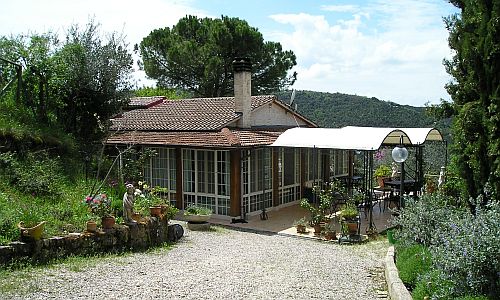Perugia
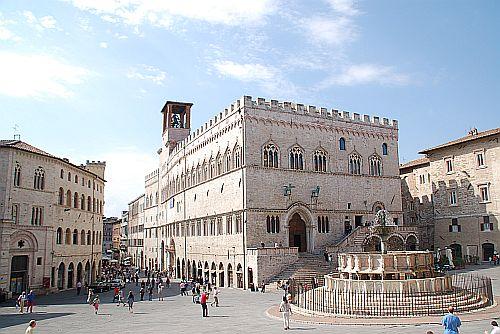
Perugia is both a province and the capital of the region of Umbria in central Italy.
The city has ± 160,000 inhabitants.
History
Perugia was founded by the Etruscans, around the 7th century BC. and was first mentioned under the name Perusia, as one of the twelve cities of the State Union of Etruria. Like most other Etruscan cities, Perugia is built like an eagle's nest on top of a steep hill. In 216 BC. and 205 BC. supported Perugia Rome during the wars against Hannibal.
During the medieval she was one of the most powerful cities of central Italy. In 1186 Perugia was granted independence by emperor and pope. In the fourteenth century, the city reached its most important period. Then after there is a time of bloody wars and civil strife.
In 1540 the city was conquered by Pope Paul III after the necessary provocation. The Pope built a mighty fortress, called Rocca Paolina to keep the rebellious Perugians under control. That worked for some three hundred years!
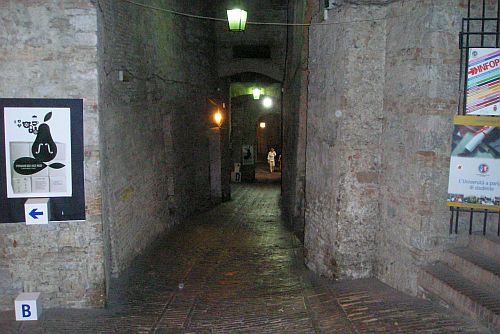
In 1849, in the wake of the European revolution, the papal government was ousted. The hated Rocco Paolina was demolished.
Among the former fortress is still to find a system of medieval streets, where Perugians make use of every day. At the site of the castle you can find now a park with a beautiful view and some monumental public buildings, such as the provincial government and the court.
Sightseeing in and around Perugia
The historical center is one of the largest in Italy and goes back to the Middle Ages and the Renaissance. Incidentally, there are also on display important remains from the Etruscan period.
This beautiful city, rich in monuments, historical testimonies and works of art from different periods allows for walks. Do you have limited mobility or do you love comfort, you can take a Perugia City Tour with a special bus from March to November.
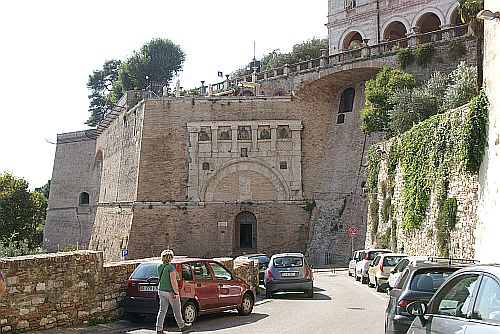
In the historic center
- Rocca Paolina (Castle)
- Porta Marzia (Gate)
- Corso Vannucci (Main Street)
- Palazzo dei Priori and Sala dei Notari (City Hall and Hall of the Notaries)
- S. Lorenzo Duomo (Cathedral)
- Fontana Maggiore (Fountain)
- Studium - Piazza Sopramuro
- Arco Etrusco (Etruscan gate)
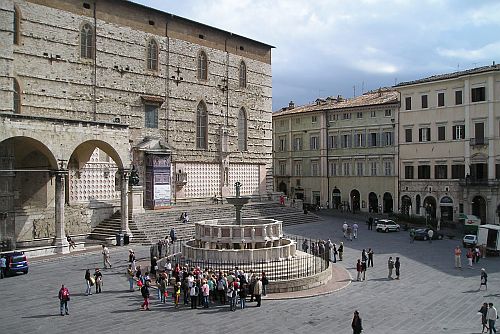
You can add one of the five Medieval districts of the city:
- District of Porta Santa Susanna: Via dei Priori with the churches of Sant'Agata, San Filippo and San Bernardino (façade is a masterpiece of Agostino di Duccio), the Porta Trasimena and the Etruscan walls in Cupa.
- District Porta Sant'Angelo: Corso Garibaldi, early Christian church of S. Angelo (6th century), Cassero, Roman Mozaiek via Appia with medieval aqueduct
- District of Porta San Pietro: Corso Cavour with the Church of Sant'Ercolano, the great cathedrals and monasteries of San Domenico (1394) and San Pietro (late 16th century), medieval garden
- District of Porta Sole: Log dei Lanari, indoor market, churches and monasteries of S. Fiorenzo, S. Simone del Carmine and S. Maria Nuova
- District of Porta Eburnea: Church of S. Prospero, church and monastery of S. Spirtito, Monastery of S. Guliana and gardens del Campaccio
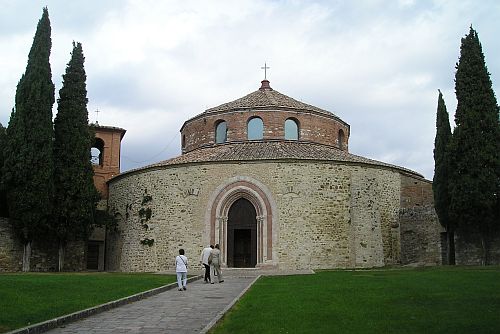
Just outside the city center
- Fontivegge, a postmodern district southwest of the historic city, designed by architect Aldo Rossi and colleagues between 1982 and 1989. The architecture is one of the finest examples of postmodernism in Italy, with buildings that are futuristic, yet classic.
- 7 km. southeast of Perugia you will find along the 75bis an Etruscan cemetery with an Etruscan tomb, the Ipogeo dei Volumni (Hypogeum of the family Volumnus).
Museums
- Galleria Nazionale dell 'Umbria: Palazzo dei Priori - Corso Vannucci (the main museum of Umbria with masters of the 13th until 19th century.
- Sala dei Notari Palazzo dei Priori - Piazza IV Novembre
- Collegio della Mercanzia: Palazzo dei Priori - Corso Vannucci, 25 (House of the traders)
- Collegio del Cambio: Corso Vannucci (House of the Money Changers with frescoes by Perugino)
- Museo di Palazzo della Penna: Via Podiani, 11 (zona Tre Archi)
- Collezione Beys: c/o Palazzo della Penna - Piazza Podiani 11
- Collezione Martinelli: c / o Palazzo della Penna - Piazza Podiani 11
- Museo Archeologico Nazionale dell'Umbria: c/o convento S. Domenico - Piazza G. Bruno, 10 (National Museum of Umbrian Archaeology)
- Gipsoteca Greca Etrusca Romana: Dipartimento di Studi Classicists - Via dell'aquilone 7
- Museo Accademia di Belle Arti, Piazza San Francesco al Prato, 5
- Post Perugia Officina della Scienza e Tecnologia la Via del Melo, 34
- Pozzo Etrusco Piazza Dante 18 (Etruscan Well)
- Soprintendenza Archeologica per l'Umbria: PG Bruno 10
- Soprintendenza per i Beni e Ambientali the Architectural Artistici Storici V. Rocchi 71 and C. Vannucci
- Ipogeo dei Volumni: Ponte San Giovanni, Via Assisana 53
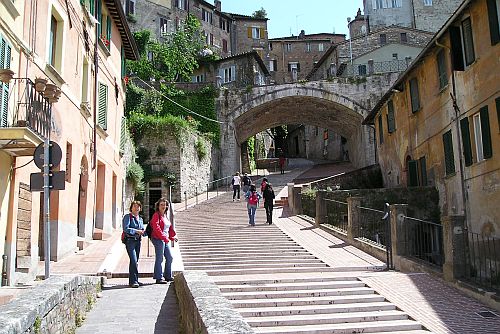
Festivals, events
- Feast of the patron saint San Costanzo: January 29
- Umbria Jazz Festival: July. The concerts are both outside and inside.
- Figuratevi - International Festival of Puppet: august
- Feast of the patron saint San Lorenzo: August 10
- Sagra Musicale Umbra: september
- Stagione di Prosa at the Teatro Comunale Morlacchi: October to May
- Stagione concertistica & quot; & quot ;: Amici della Musica from October to May
- Euro Chocolate, chocolate festival: october
- Fiera dei morti, Feast of All Souls: around November 2.
- Umbria Libri: november
- Immaginario Festival: november
Markets
- Mercato Coperto: Piazza Matteotti 18, entrance to the right of the IAT, the local tourist office; Mon-Sat: 7.00-13.30 Sat. also 16:30 to 19:30
- Weekmarkt, Pian di Massiano, Saturdays from 8.00-13.00, the largest market of Umbria
- Mercato dell'Antiquariato, antiques market, Piazza Italia, the last weekend of the month Jan-Sept: 9.00-22.00
<img alt="Mini" metro="" perugia"="" class="img_main_blog" data="" data-cke-saved-src="http://www.villa4stagioni.com/lobster/images/umbria/perugia-minimetro1.jpg" src="http://www.villa4stagioni.com/lobster/images/umbria/perugia-minimetro1.jpg">
Parking
On calm days you can park close to the historical center in the Parcheggio Piazzale Partigiani or Parcheggio Piazzale Europa. From here you walk through the scale mobili (escalators) to the center. The last part you walk through the Rocca Paolina.
During events or busy summer days you can better park near the football stadium on the Parcheggio Pian di Massiano, a very large parking lot (mostly free) and from here you take the Mini Metro to the historical center. Get off at Cupa or Pincetto and take the escalator.
